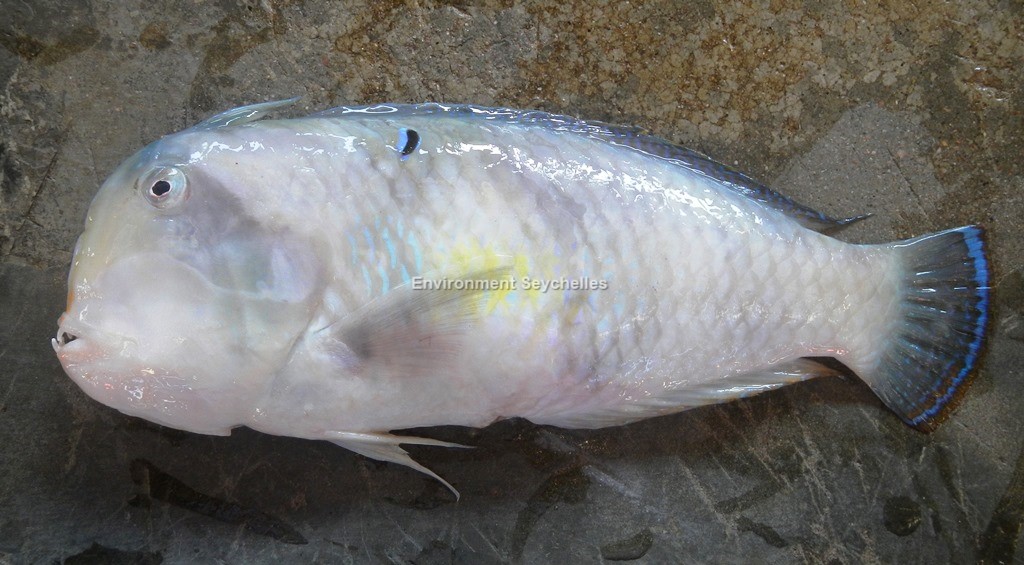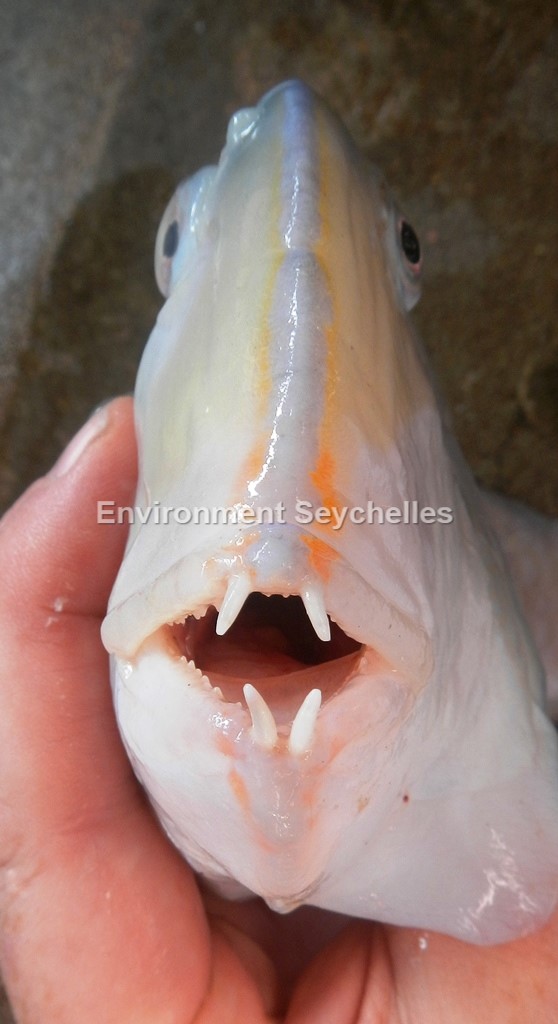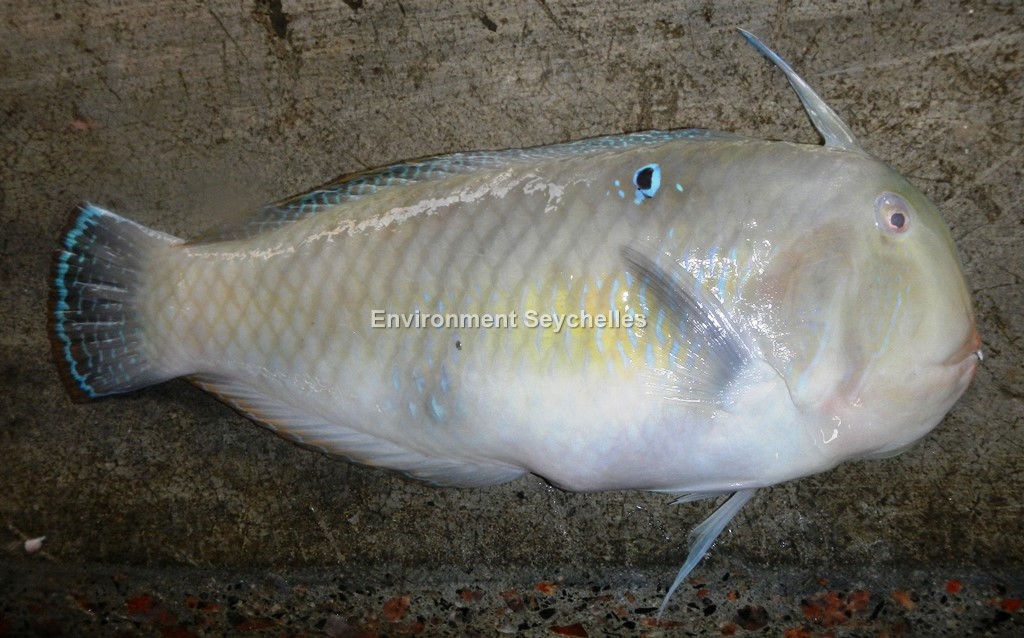Description:
Dorsal spines: 9; Dorsal rays: 12-13; Anal spines: 3; Anal rays: 12-13.
Highly compressed body and a steep head profile, approaching the vertical, forehead with a firm knife-like anterior edge. A pair of long curved canine teeth anterior in jaws,
followed by a row of strong conical teeth and two or three inner rows of nodular teeth. First two dorsal spines well separated from rest of fin, originating over posterior
of eye the spine is flexible and elongate, the first more than twice the length of the remaining spines in adults (much longer in juveniles). Caudal fin small and rounded.
Colour. Adults grey on back shading to yellowish white below with three indistinct broad dark bars on body and a fourth on caudal fin base. Often also with an indistinct
diagonal bar below the eye. Small blue edged black spot just above lateral line, centred below the 6th dorsal spine.
Juveniles have elongate anterior dorsal-fin spines forming a 'flag" and three ocelli along the dorsal fin. They vary in colour from whitish with dark bars on the body, to
overall brown in colour.
Size:
Maturity: Lm unknown. Range unknown. Max Length: 42cm TL.
Habitat and Ecology:
Usually solitary in lagoon and seaward reef areas with fine to loose, coarse sand bottoms (depth 1-100 m, typically 20-30 m). Lives on open sandy areas and dives into sand,
with the approach of danger, enabled by slim body and sharp anterior surface. Small juveniles mimic drifting leaf litter and debris. Feeds mostly on hard-shelled prey,
including molluscs and crustaceans. Distinct pairing during breeding.
Fishery Status:
This species is not protected or subject to fishery regulations. It is caught in the trap, net and handline fisheries, but is a rare component of the catch.
Notes:
References:
Bray, D.J. (2017). Iniistius pavo in Fishes of Australia, http://136.154.202.208/home/species/296 (24/03/20).
Froese, R. & D. Pauly. (Eds.) (2019). FishBase. https://www.fishbase.se/summary/5613 (05/06/19).
Randall, J.E. (1986). Labridae. p. 683-706. In M.M. Smith and P.C. Heemstra (eds.) Smiths' sea fishes. Springer-Verlag, Berlin.
Russell, B. (2010). Iniistius pavo. The IUCN Red List 2010: https://dx.doi.org/10.2305/IUCN.UK.2010-4.RLTS.T187705A8606763.en. (24/03/20).
Citation:
Nevill, J.E.G. (2019). Iniistius pavo, Peacock wrasse. Seychelles Seatizens. www.seatizens.sc. https://seatizens.sc/species/iniistius-pavo-valenciennes-1840/ (edited 12/07/22).




I loved your article.
Im obliged for the blog.Really thank you! Fantastic.
Great, thanks for sharing this article.Much thanks again. Will read on…
Very informative blog post.Really looking forward to read more. Awesome.
Thanks for the blog. Really Cool.
Enjoyed every bit of your blog article.Much thanks again. Really Great.
A round of applause for your blog article. Great.
I loved your blog post.Much thanks again. Cool.
Thanks for the article.
Awesome blog.Really looking forward to read more. Really Great.
Thanks for the blog post. Much obliged.
I think this is a real great post. Much obliged.
A big thank you for your blog article.Really thank you! Awesome.
I really like and appreciate your article.Thanks Again. Will read on…
Thanks again for the blog article.Really looking forward to read more. Want more.
Thanks-a-mundo for the blog article.Much thanks again. Really Cool.
Wow, great blog article. Really Cool.
I cannot thank you enough for the blog article. Really Great.
I am so grateful for your blog post.
Thanks again for the post. Really Cool.
I really like and appreciate your article.Thanks Again. Much obliged.
Thank you for your blog article.Thanks Again. Much obliged.
Thanks for the blog article.Thanks Again. Fantastic.
Thanks so much for the blog post.Much thanks again. Great.
I am so grateful for your article.Really thank you! Keep writing.
I value the blog article.Really thank you! Will read on…
I really like and appreciate your blog post. Great.